Having an agile Scrum certification is essential for anyone working in project management or software development. This article will help you decide what is the best Scrum certification to help you with your career, and to better understand agile and scrum practices.
1. Introduction to Scrum and Its Importance
As businesses grapple with rapidly changing market dynamics, the need for scrum methodologies that promote adaptability, efficiency, and collaboration has never been more pronounced.
Enter Scrum—a framework that’s not just about processes, but a mindset shift.
Scrum framework importance
The Scrum framework is recognized as a transformative force for managing projects of all shapes and sizes.
At its core, Scrum revolves around iterative development, with roles like the Scrum Master, Project Manager, and Product Owner.
These roles play a pivotal part in ensuring the successful implementation of agile project management using Scrum principles and practices.
Understanding Scrum
Understanding the Scrum framework isn’t merely about grasping its theoretical aspects.
It’s about the practical application of Scrum principles in diverse scenarios, ensuring that Scrum teams function optimally.
This is where the value of a Scrum certification becomes evident. A certification doesn’t just validate your knowledge of Scrum.
A certification is a testament to your ability to apply the Scrum framework effectively in real-world contexts.

2. The Evolution of Scrum and Its Global Impact
The journey of the Scrum framework, from its inception to its current status as a cornerstone in project management, is nothing short of remarkable.
Where did Scrum start?
Originating in the early ’90s, the term “Scrum” was first introduced in a study about product development. Jeff Sutherland and Ken Schwabe were instrumental in developing Scrum.
They presented it as a framework designed to address complex adaptive problems while productively and creatively delivering products of the highest possible value.
What’s happened since then?
Over the years, Scrum has undergone significant evolution, transcending its initial application in software development to become a universal framework for agile project management that is applicable across various industries and disciplines.
Scrum today
Today, Scrum stands as a beacon in the world of project management, guiding Scrum teams across industries in their quest for efficiency, adaptability, and excellence.
From Software to Beyond
Scrum’s transformative power isn’t confined to the realm of software development.
Industries ranging from manufacturing to marketing, healthcare to education, have embraced the Scrum framework for agile project management.
They have leveraged its principles to optimize processes, enhance collaboration, and foster a culture of continuous improvement.
Organizations worldwide are now recognizing the value of Scrum in:
- driving innovation
- responding to changing customer needs
- delivering products and services that truly make a difference
- and more
A Global Movement
The global adoption of the Scrum methodology is a testament to its versatility, effectiveness, and alignment with the core agile principles that prioritize customer value, adaptability, and a commitment to excellence.
Scrum has become more than just a framework for agile project management; it has evolved into a movement, a community of practitioners dedicated to learning, sharing, and pushing the boundaries of what’s possible.
Aligning with Agile Principles
At the core, Scrum methods are deeply aligned with agile projects and agile thinking.
Scrum practices emphasize:
- Individuals and interactions over processes and tools
- Working solutions over comprehensive documentation
- Customer collaboration over contract negotiation
- Responding to change over following a plan.
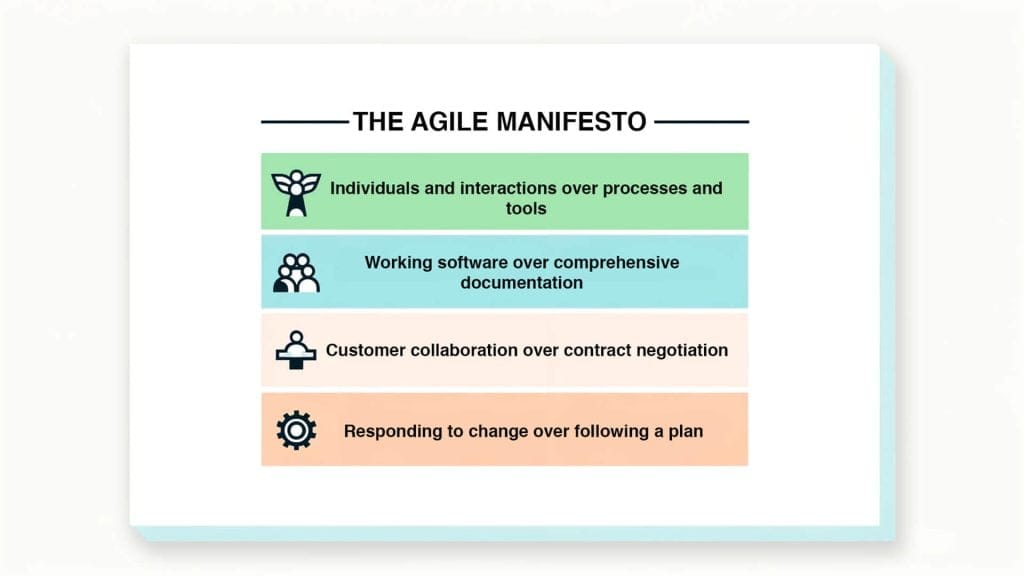
Continuous Evolution and Learning
As we look to the future, the evolution of Scrum continues. The framework is constantly being refined and adapted to meet the challenges of an ever-changing world.
Scrum Guide
The Scrum Guide, which outlines the framework’s roles, events, and artifacts, is regularly updated to reflect these changes and provide clear guidance to Scrum practitioners worldwide to help them understand Scrum principles.
In embracing Scrum, organizations are not just adopting a framework; they are joining a global community committed to excellence, innovation, and the relentless pursuit of value.
The story of Scrum
The story of Scrum is one of transformation, learning, and adaptation.
It continues to unfold across industries and borders, shaping the future of work and project management using cross functional teams.
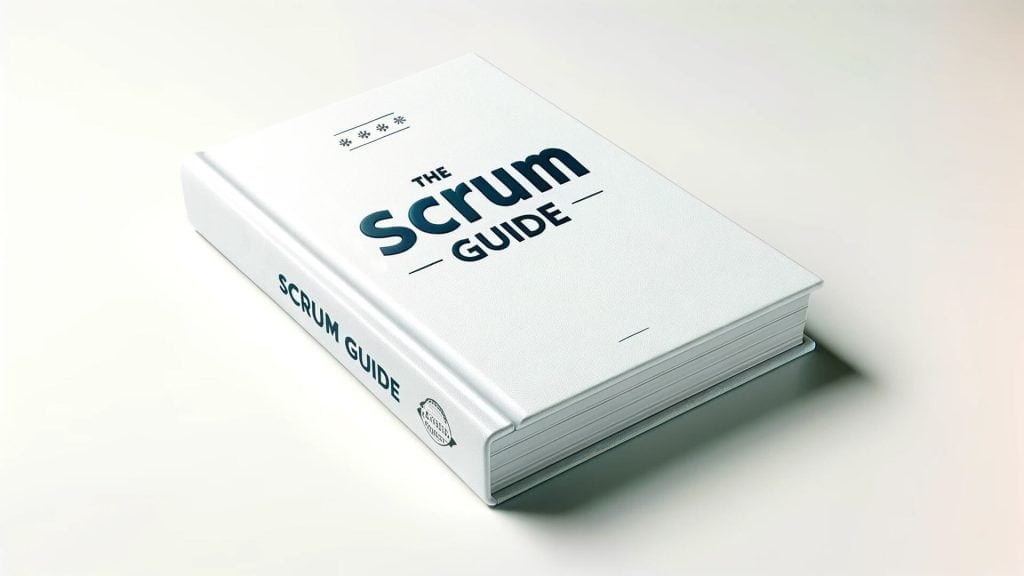
3. The Value of Scrum Certification
In the competitive landscape of project management methodologies, Scrum has emerged as a frontrunner, distinguishing itself through its agility, efficiency, and focus on improvement.
The demand for Scrum certifications has surged, reflecting the framework’s effectiveness and the value it brings to individuals and organizations alike.
Here are just some illustrations of value that can be gained from the many scrum certifications available today.
Professional Recognition
Achieving a Scrum certification is more than just acquiring a new title; it’s a recognition of your expertise and commitment to excellence in the agile domain.
It showcases your basic knowledge and proficiency in the Scrum framework and your readiness to contribute effectively to agile projects as part of the wider agile team.
Whether you are a seasoned project manager, a developer looking to expand your skills, or an individual aspiring to step into the role of a Certified Scrum Master, taking a scrum certification course will enhance your professional credibility.
It demonstrates that you have met the rigorous standards set by certifying bodies, have successfully passed the certification tests, and are equipped to bring value to agile teams.

Skill Enhancement
The journey to Scrum certification is rich in learning and skill enhancement.
Certification training courses offer an immersive experience, providing a deep dive into the intricacies of Scrum concepts, methodologies, and practices.
Participants learn the art of guiding teams, managing product backlogs, and ensuring that the Scrum framework is implemented effectively.
Scrum certifications training goes beyond theoretical knowledge, equipping individuals with practical skills and tools to drive efficiency and continual improvement in their projects.
An agile scrum certification fosters a comprehensive understanding of Scrum, enabling professionals to apply scrum training confidently and effectively.
Career Advancement
In today’s agile-centric work environment, demand is at an all-time high for professionals who have had certified scrum training and who can confidently apply scrum principles.
Scrum Master roles are becoming increasingly prevalent, and organizations are actively seeking Certified Scrum Masters that can lead their agile teams to success.
Holding a Scrum Master certification, such as the Certified ScrumMaster (CSM) gained by passing the CSM exam, Safe Scrum Master (SSM), or Professional Scrum Master I certification (PSM), serves as a key differentiator in the scrum master job market.
This can unlock a wealth of career opportunities.
The top Scrum certifications position individuals for career growth, enhancing their employability and paving the way for professional advancement.

Organizational Benefits
The advantages of Scrum certifications extend beyond individual gains; they translate into tangible benefits for organizations as well.
Certified Scrum Masters and Certified Scrum Product Owners play a pivotal role in ensuring the smooth functioning of Scrum teams.
They:
- Facilitate effective Scrum events
- Uphold the principles of the Scrum framework
- Drive alignment with agile practices
- Use risk assessment skills to minimize organizational risk
This results in projects that are not only delivered on time and within scope but also consistently meet or exceed stakeholder expectations.
The presence of certified Scrum professionals such as a certified scrum master within an organization enhances its agile capabilities, contributing to a culture of excellence and improvement.

4. Diving Deeper: Roles within the Scrum Framework
The Scrum framework is renowned for its simplicity and effectiveness. A significant part of its success can be attributed to the clearly defined roles within the framework.
Each role has its unique responsibilities and plays a crucial part in the project’s success.
Let’s delve deeper into the key roles of the Scrum Master, the Product Owner, and the Scrum Team.
Scrum Master: The Agile Facilitator
The Scrum Master is often considered the heartbeat of the team, playing a pivotal role in ensuring that the team adheres to Scrum principles and practices.
A Scrum Master acts as a facilitator, mentor, and coach, guiding the team through the complexities of Scrum and helping them navigate challenges.
The Scrum Master works tirelessly to create an environment where the team can focus on their work without external disruptions.
They also play a crucial role in fostering a culture of continual improvement, encouraging the team to reflect on their processes and find ways to enhance efficiency and effectiveness.
The Scrum Master is not just an overseer; they are an integral part of the team, committed to its success and well-being.
Product Owner: The Visionary
The Product Owner is the custodian of the product vision.
They have a deep understanding of the market, the customers, and the business goals, and they use this knowledge to prioritize the product backlog.
The Product Owner ensures that the team is always working on tasks that deliver maximum value, making critical decisions that steer the product in the right direction.
They act as a bridge between the stakeholders and the Scrum team, ensuring that the team’s efforts are aligned with the business objectives.
The Product Owner’s decisions are rooted in market understanding, stakeholder feedback, and a clear vision of what the product should achieve.
Scrum Team: The Collaborative Powerhouse
The Team is a dynamic and cross-functional group of professionals, each bringing their unique skills and expertise to the table.
They work collaboratively, from ideation to execution, ensuring that every aspect of the project is handled within the team.
This cross-functional nature promotes a high level of collaboration and efficiency, as the team has all the necessary skills to complete the project from start to finish.
The team is self-organizing, taking ownership of their tasks and working together to overcome challenges and deliver high-quality results.
Together, these roles form the backbone of the Scrum framework, each playing a vital role in ensuring the success of the project.
The Scrum Master ensures that the team adheres to Scrum principles, the Product Owner provides direction and focus, and the Team brings the skills and collaboration needed to get the job done.
This synergy is what makes Scrum such a powerful tool for project management.
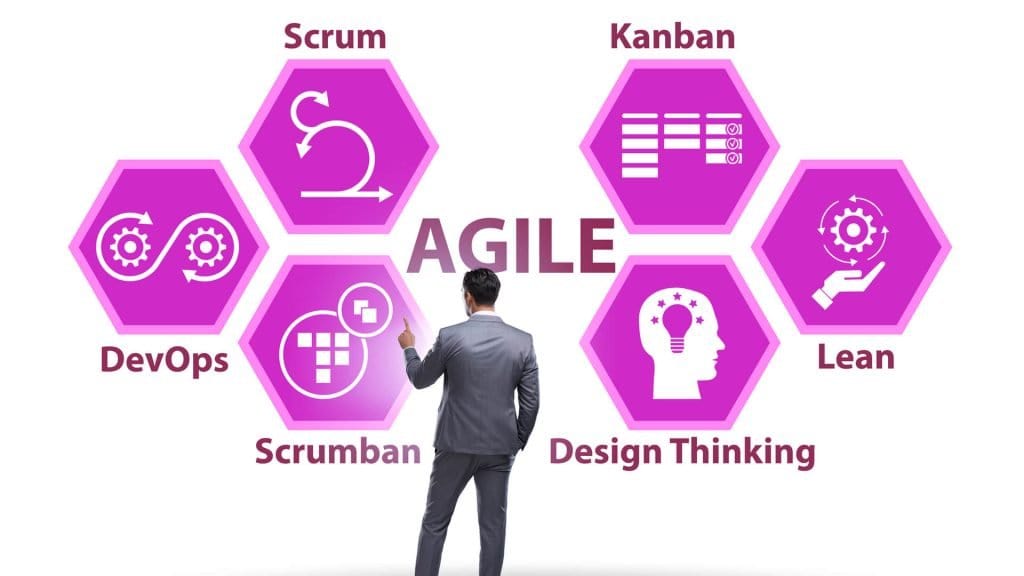
5. The Synergy of Scrum and Agile
In the world of modern software development and project management, two terms often stand out: Scrum and Agile.
While they are sometimes used interchangeably, they represent distinct concepts, each with its unique characteristics and value propositions.
Understanding the synergy between the Scrum framework and agile principles is crucial for anyone looking to delve deep into this domain.
Agile: The Broader Philosophy
Agile is a mindset, a philosophy that champions adaptability, customer collaboration, and responsiveness to change.
Rooted in the Agile Manifesto, it lays out twelve core principles that prioritize individuals and interactions over processes and tools and working solutions over comprehensive documentation.
Agile team methodologies are diverse, ranging from Kanban to Extreme Programming, each offering a unique approach to software development.
Scrum: The Tactical Framework
Scrum, on the other hand, is a specific framework that operationalizes the agile philosophy in a structured manner.
Scrum methods provide teams with a set of practices, roles, and events to facilitate iterative development.
From Scrum Masters guiding teams to Scrum events like sprints and sprint reviews, Scrum concepts offer a detailed roadmap for teams to navigate the complexities of project delivery.
The Confluence of Principles
While Agile lays the philosophical foundation, Scrum offers the tactical tools. The principles of the Agile Manifesto resonate deeply with Scrum principles.
For instance, the Agile emphasis on customer collaboration aligns perfectly with the focus from the Scrum methodology on regular feedback through sprint reviews.
Similarly, Agile’s value of responding to change over following a plan is mirrored in Scrum’s adaptability through its sprint retrospectives, where Scrum teams reflect and adjust their strategies.
Global Adoption and the Ensuing Synergy
As organizations worldwide recognize the value of agile principles, many choose the Scrum framework as their go-to approach.
This global adoption isn’t merely a trend; it’s a testament to the synergy between Agile’s overarching philosophy and Scrum’s actionable practices.
Agile teams adopting Scrum benefit from a clear structure while staying true to the core tenets of Agile.
This synergy ensures projects are not only efficiently managed but also deliver maximum value to customers.
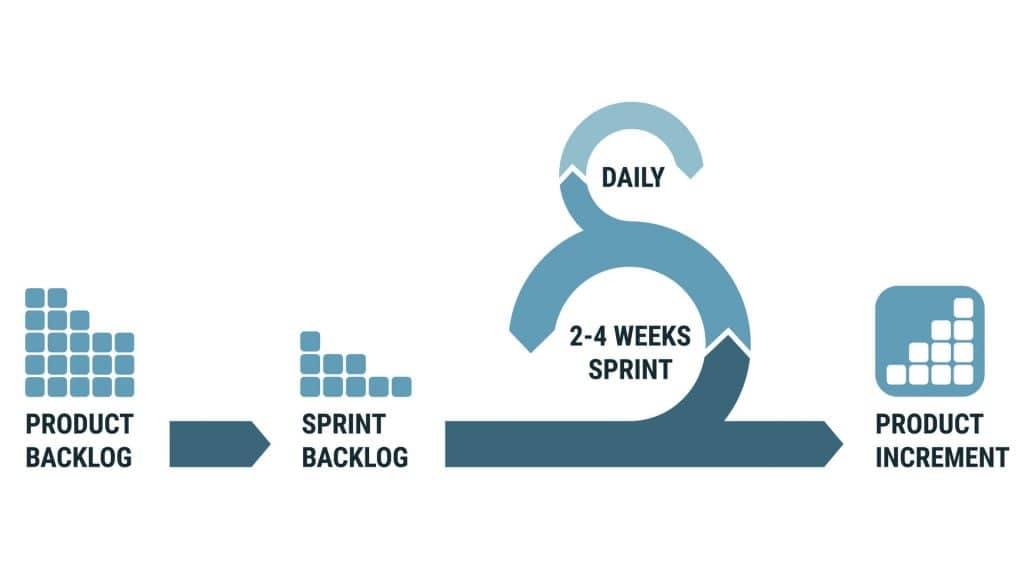
6. Overview of Certifying Bodies and Their Offerings
In the dynamic landscape of Scrum and Agile, professionals often seek certifications such as a scrum master certification to validate their expertise and stand out in the competitive job market.
Several esteemed organizations offer Scrum certifications, each with its distinct focus, philosophy, and curriculum.
Let’s delve deeper into the offerings these prominent certifying bodies who are considered to offer the best scrum certifications.

a. Scrum Alliance
The Scrum Alliance stands as a global leader in Scrum certifications, with a presence in over 70 countries.
Founded in 2001, it has since been dedicated to transforming the world of work through Scrum.
Pathway
Their certification pathway starts with the foundational Certified ScrumMaster (CSM).
This is a scrum master certification designed for individuals new to the Scrum framework.
CSM can provide a good career progression for scrum team members.
As professionals progress, they can explore advanced certifications like the Advanced Certified ScrumMaster and the Certified Scrum Professional.
Product management
For those with a penchant for product management, the Certified Scrum Product Owner (CSPO) offers insights into effective product backlog management, stakeholder collaboration, and delivering products that maximize value.
This can be a good option for a scrum team member who wants to progress into product management.
Benefits
- Globally recognized certifications.
- Access to a vast community of Scrum professionals.
- Provides both online and in-person training options.
Cons
- Requires renewal every two years with associated fees.
- Some certifications require mandatory training, which can be costly.
Prices (2023 Estimates)
- Certified ScrumMaster (CSM): $1,000 – $1,400 (including training).
- Certified Scrum Product Owner (CSPO): $1,000 – $1,400 (including training).
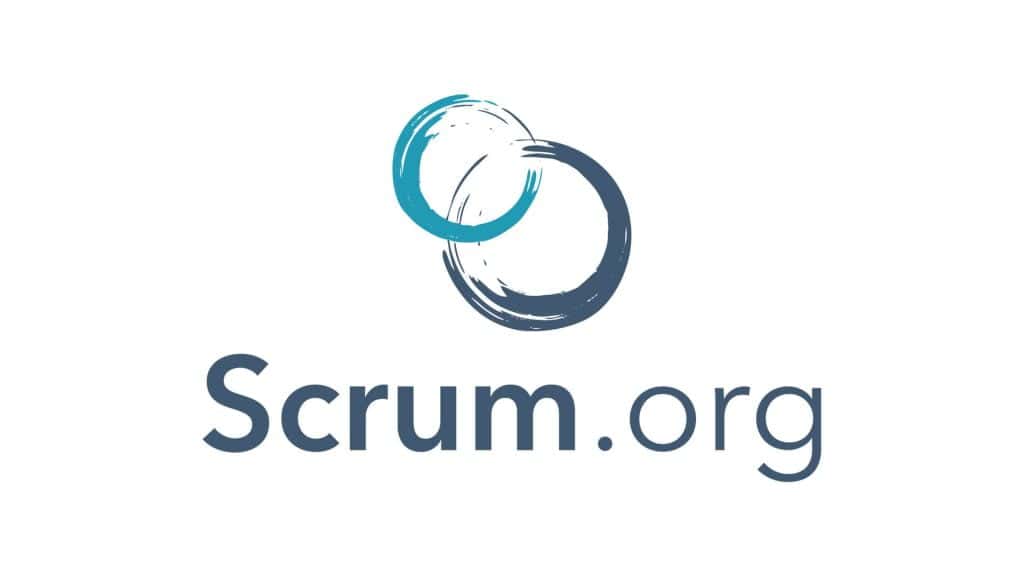
b. Scrum.Org
With its roots traced back to one of Scrum’s co-creators, Ken Schwaber, Scrum.org is renowned for its rigorous certification programs.
Professional Scrum Master I Qualification
Their Professional Scrum Master (PSM) series is a three-tiered program, starting with PSM I for beginners, advancing to PSM II for experienced practitioners, and culminating in the challenging PSM III certification for true Scrum experts.
Product Owner track
Beyond the Scrum Master track, Scrum.org also offers the Professional Scrum Product Owner certification, emphasizing the strategic and tactical roles of product owners in maximizing product value within Scrum teams.
Benefits
- Certifications are lifelong with no renewal fees.
- Established by Scrum co-creator, ensuring depth and rigor.
- Offers a range of assessments catering to different expertise levels.
Cons
- Does not mandate training, but the exams can be challenging without it.
- Some find the exams more difficult compared to other certifying bodies.
Prices (2023 Estimates)
- Professional Scrum Master I (PSM I): $150 (exam only).
- Professional Scrum Product Owner I (PSPO I): $150 (exam only).
c) PMI (Project Management Institute)
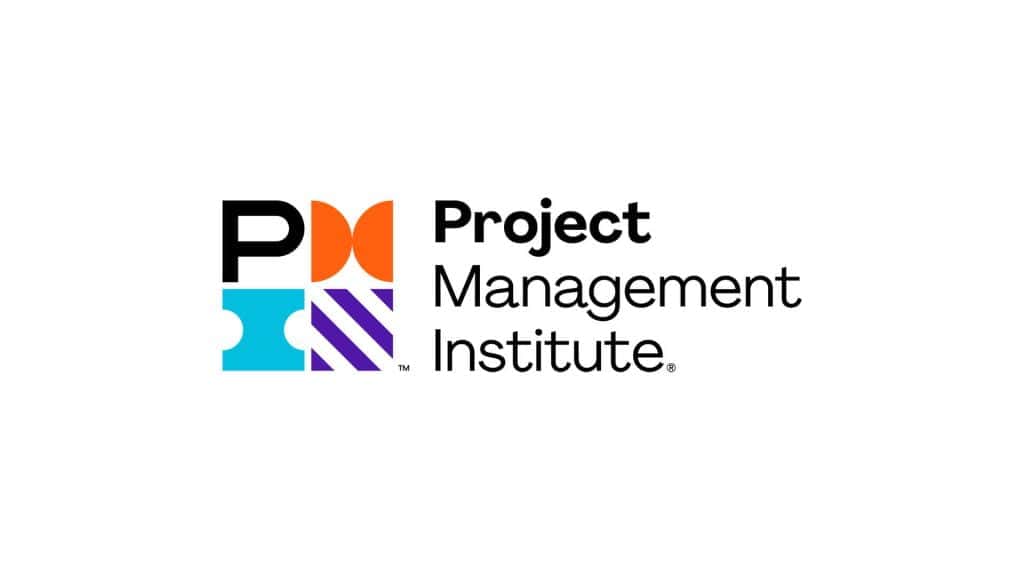
A titan of project management, PMI’s venture into Agile underscores the growing integration of agile principles in traditional project management.
PMI Agile Certified Practitioner
The PMI Agile Certified Practitioner certification is not exclusively about Scrum but encompasses a broad spectrum of agile methodologies.
It’s designed for those who believe in the Agile mantra of iterative development, collaboration, and adaptability and wish to showcase their expertise in handling agile projects.
This should apply to any member of a scrum team who is seeking an agile scrum qualification.
Benefits
- Widely recognized in the project management community.
- Covers a broad spectrum of agile methodologies, not just Scrum.
- Offers PDUs (Professional Development Units) which can be used for other PMI certifications.
Cons
- Requires a combination of training hours and project experience.
- Renewal requires earning PDUs, which can involve additional costs.
Prices (2023 Estimates)
- PMI Agile Certified Practitioner (PMI-ACP): $435 for PMI members, $495 for non-members.
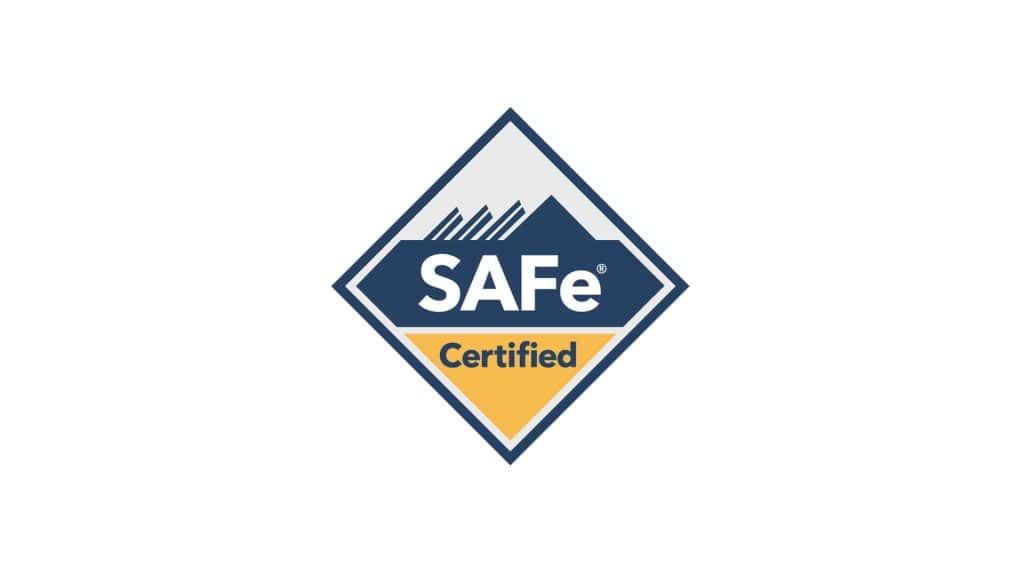
d) Scaled Agile
As organizations grow, the challenges of scaling Scrum and Agile practices become pronounced.
SAFe Scrum Master Certification
Scaled Agile addresses this with its Scaled Agile Framework (SAFe). The SAFe Scrum Master certification, one of their many offerings, equips professionals with the skills to facilitate Scrum practices at an enterprise scale.
For large, complex, projects, SAFe can provide some of the best scrum certifications.
The SAFe Scrum Master track delves into the nuances of roles, responsibilities, and activities in a scaled environment, ensuring that the core Scrum principles remain intact even in large, complex settings.
Benefits
- Ideal for large organizations looking to scale their agile practices.
- Provides a comprehensive framework for enterprise agility.
- Recognized by major corporations worldwide.
Cons
- Can be perceived as more complex due to its focus on enterprise scaling.
- Some agile purists believe it deviates from core agile principles.
Prices (2023 Estimates)
- SAFe Scrum Master: $995 – $1,295 (including training).

7. Types of Scrum Certifications
The world of Scrum offers a plethora of certifications, each tailored to specific roles and levels of expertise within the Scrum framework.
There is no such thing as a generic best scrum certification.
Deciding on the best scrum certifications for you will depend on a number of factors, including:
- The experience of the individual
- The characteristics of the organization
- The budget available for certification training
- The requirements of the organization
- Existing knowledge of scrum concepts
These scrum certifications gained through a certification exam.
They not only validate an individual’s knowledge and skills but also provide a structured learning path for those keen on mastering Scrum.
This is true for a scrum master certification, or for product owner and team certifications.
Let’s delve deeper into some of the best Scrum certifications available today.
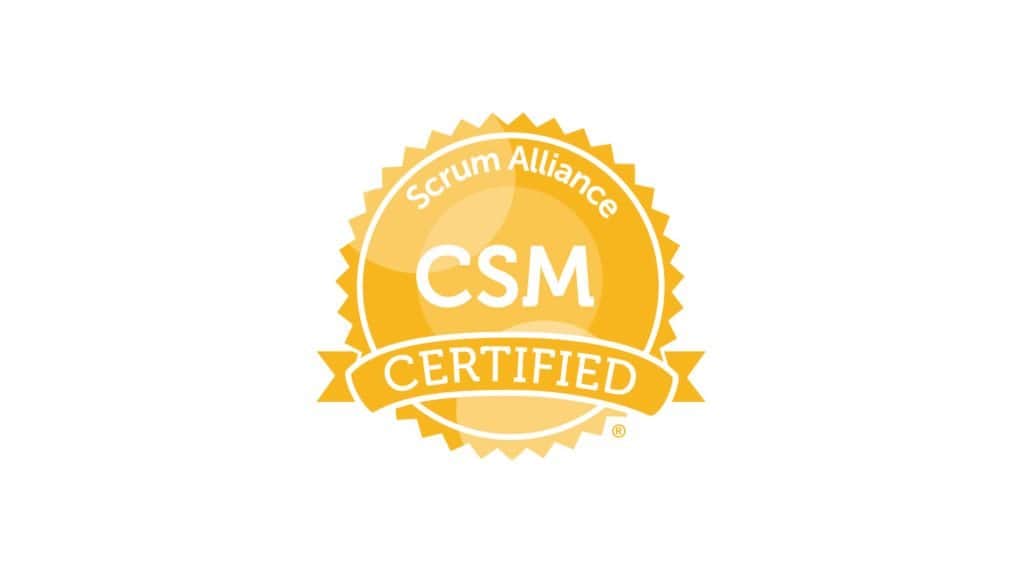
1. Certified Scrum Master (CSM certification)
Offered by the Scrum Alliance, the CSM certified scrum master certification is often the starting point for many Scrum enthusiasts.
Who is the CSM certification for?
CSM certification is designed primarily for individuals aspiring to be Scrum Masters.
The certified scrum master certification (CSM certification) focuses on the foundational scrum concepts as defined by the Scrum Alliance, helping them to guide teams.
A CSM certification emphasizes the Scrum Master’s pivotal role in facilitating, coaching, and guiding the team towards successful project completion.
Pathway for the CSM certification
To obtain the CSM scrum master certification, candidates must attend a two-day scrum master CSM certification training course led by a Certified Scrum Trainer, and pass the subsequent CSM certification tests in a CSM exam.
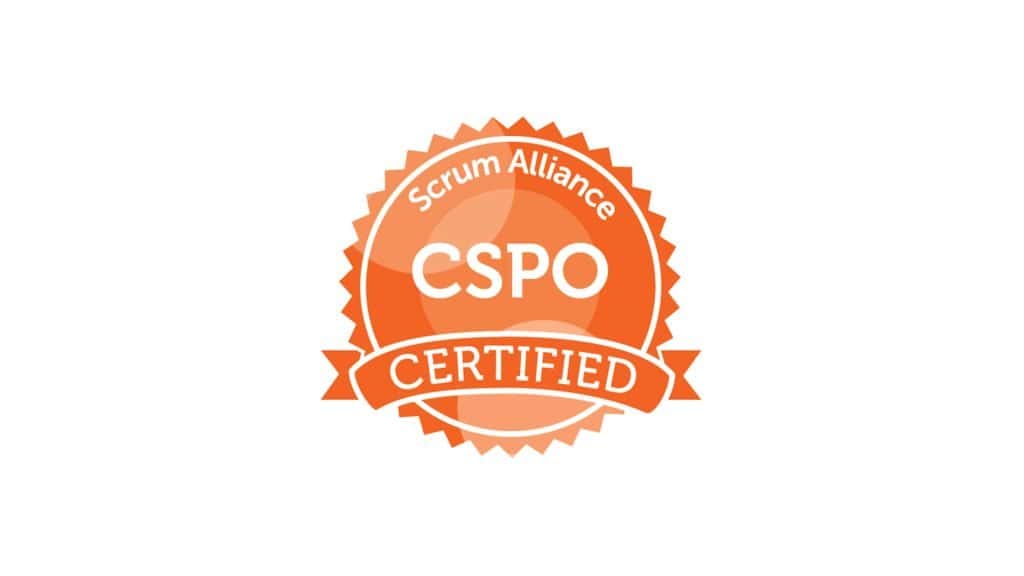
2. Certified Scrum Product Owner (CSPO)
The certified scrum product owner certification is also a brainchild of the Scrum Alliance.
Who is it for?
The certified scrum product owner CSPO certification is tailor-made for those inclined towards the Product Owner role within the Scrum framework, rather than towards CSM certification.
A Product Owner is crucial as they bridge the gap between the development team and stakeholders.
This certification delves deep into how a product owner can craft a product vision, manage the product backlog, and collaborate with stakeholders to ensure the delivery of maximum value.
Pathway
The pathway to CSPO involves attending a two-day training course by a Certified Scrum Trainer and taking a certification exam.

3. Professional Scrum Master (PSM)
Scrum.org offers the PSM certification, renowned for its rigor and depth.
Unlike the CSM certification, the PSM comes in three levels: PSM I, PSM II, and the coveted PSM III.
Who is it for?
These are scrum master certifications.
Pathway
Each level tests the candidate’s understanding of Scrum principles, practices, and the nuances of the Scrum Master role with increasing complexity as they guide teams.
While there are no mandatory prerequisites for these scrum master certification exams, undergoing training is often recommended to better prepare for these challenging certification exams.
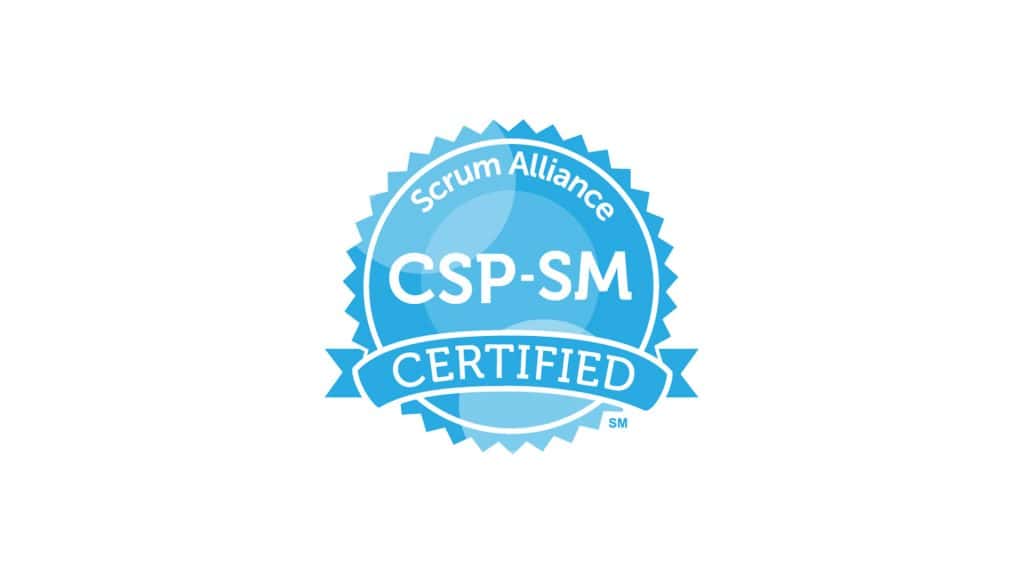
4. Certified Scrum Professional (CSP)
Who is it for?
For those who have journeyed beyond the foundational levels and are looking for advanced recognition, the Scrum Alliance offers the CSP certified scrum professional certification.
The certified scrum professional certification is designed for seasoned Scrum practitioners who have showcased extensive experience, undergone documented training, and demonstrated profound knowledge in Scrum.
Pathway for the Certified Scrum Professional
To be eligible for the certified scrum professional, one must hold a CSM, CSPO, or CSD certification, possess extensive Scrum experience, attend advanced training sessions, and pass the certification exam.

5. SAFe Scrum Master (SSM)
With the rise of large enterprises adopting Scrum, the need for a framework to scale Scrum became evident.
The Scaled Agile Framework (SAFe), championed by Scaled Agile, addresses this need.
Who is it for?
Within this framework, the SSM scrum master certification exam equips Scrum Masters with the skills and knowledge to function effectively in large, complex environments.
This scrum master certification covers the intricacies of implementing Scrum at an enterprise scale.
Pathway
Aspiring SAFe Scrum Masters must attend a SAFe Scrum Master training course to be eligible for the certification.
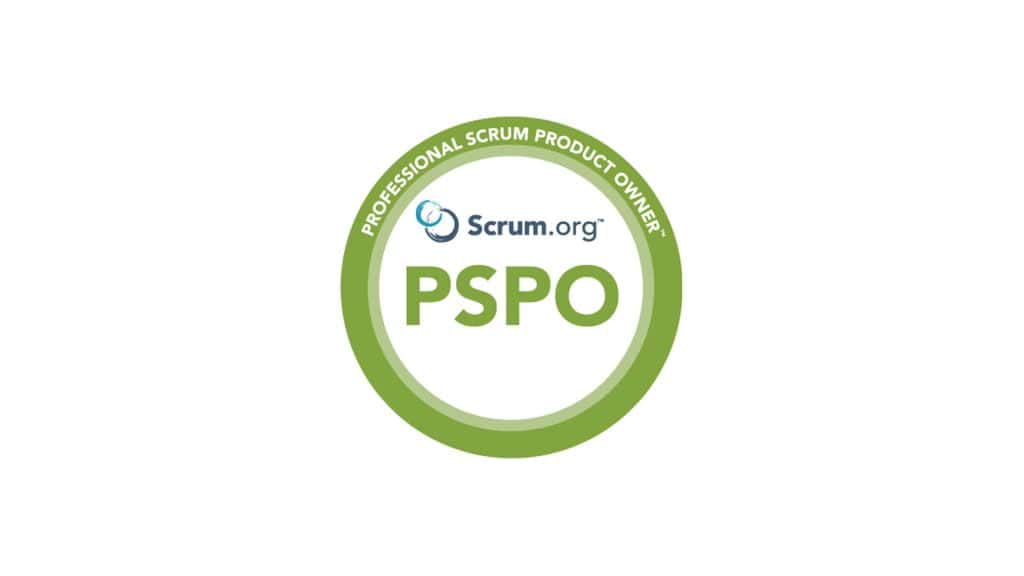
6. Professional Scrum Product Owner (PSPO)
Parallel to the CSPO but offered by Scrum.org, the PSPO professional scrum product owner certification is another esteemed recognition for Product Owners.
Who is it for?
These scrum certifications test candidates on their expertise in product backlog management, delivering value, and the strategic role of a Product Owner.
Pathway
The PSPO is available in two levels: PSPO I and PSPO II, with the latter being more advanced.
While there are no strict prerequisites, training is often recommended to navigate the intricacies of the exam.
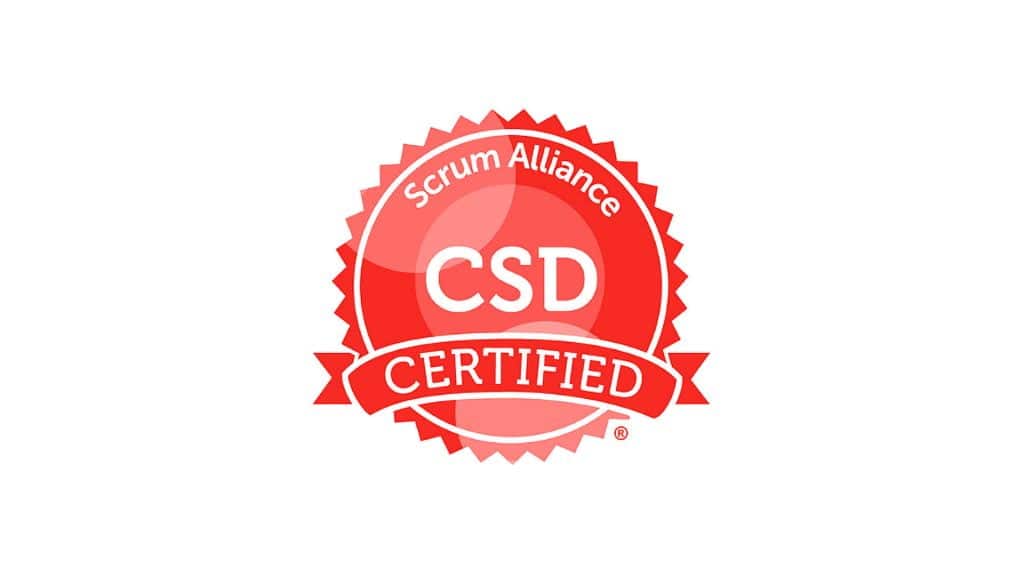
7. Certified Scrum Developer (CSD)
Who is it for?
Software developers keen on honing their skills in a Scrum environment can opt for the CSD certification from the Scrum Alliance.
This certification emphasizes both technical prowess and a deep understanding of Scrum principles.
It ensures that developers are well-equipped to contribute effectively to their Scrum teams.
Pathway
The journey to CSD involves attending a series of technical certification courses and successfully passing an assessment.
8. Scrum in Large Enterprises: The Scaled Agile Framework (SAFe)
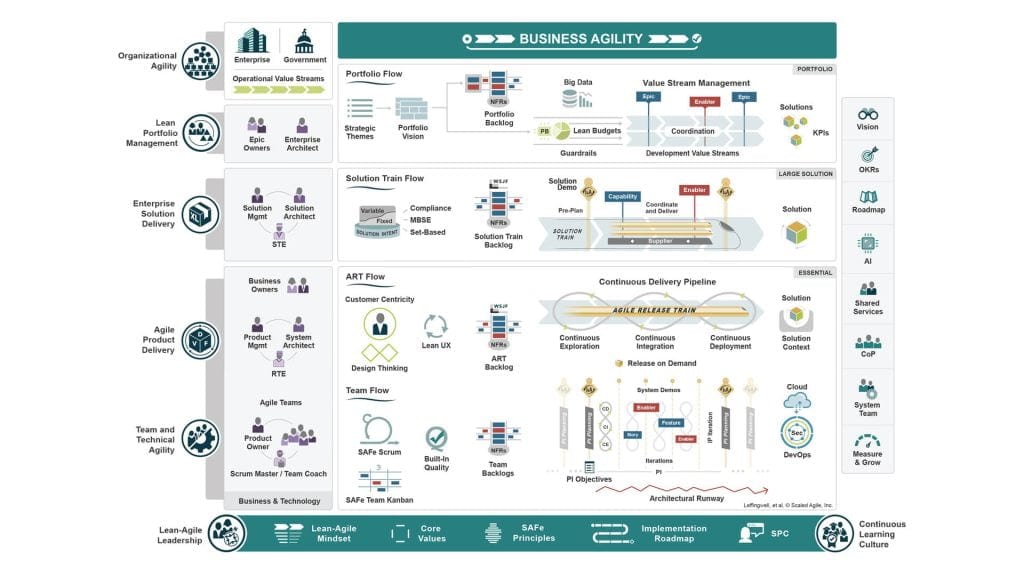
Image: Scale Agile Framework
In software development and project management, Scrum has proven its mettle as an effective framework for small to medium-sized teams.
Its iterative approach, clear roles, and emphasis on collaboration make it a favorite among teams and project managers aiming for agility.
However, as organizations grow and projects become more complex, the challenges of scaling Scrum become evident.
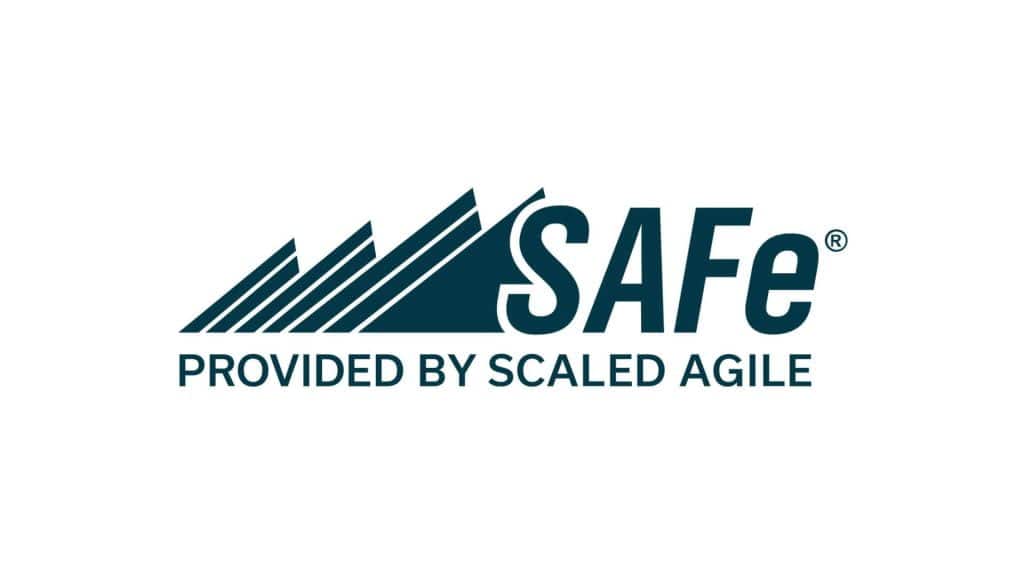
The Challenge of Scale
Large enterprises with many project managers often grapple with multiple Scrum teams working on various aspects of a single product or across different products.
Ensuring alignment, maintaining consistent velocities, managing dependencies, and ensuring a continuous flow of value with multiple scrum events can be daunting for any project manager.
Traditional agile methodologies, while effective at the team level, may not provide the necessary tools and processes to manage these challenges at an enterprise scale.
Enter SAFe: A Solution for Enterprise Agility
The Scaled Agile Framework (SAFe), developed and championed by Scaled Agile, offers a comprehensive solution to these challenges.
SAFe provides a structured approach to scale Scrum and Agile practices across the enterprise.
It introduces roles, responsibilities, and activities that ensure alignment, collaboration, and delivery of value at scale.
At the heart of SAFe is the concept of the Agile Release Train (ART), a team of cross functional teams that plan, commit, and execute together.
ARTs ensure that multiple teams working on interdependent tasks remain aligned and deliver integrated solutions.
The Role of the SAFe Scrum Master
In the SAFe ecosystem, the SAFe Scrum Master assumes a role that goes beyond traditional Scrum Master responsibilities.
While they still champion Scrum principles and ensure their team’s well-being, their scope extends to the larger enterprise context.
SAFe Scrum Masters:
Facilitate team-level events and also participate in Program Increment (PI) planning, a crucial event where multiple teams align on a shared vision for the upcoming increments.
Work closely with other Scrum Masters within the ART to manage dependencies, share best practices, and ensure a smooth flow of value.
Collaborate with the Release Train Engineer (RTE), the master of the train, to address impediments that might hinder the ART’s progress.

9. How to Choose the Right Scrum Certification
In the ever-evolving landscape of Scrum and Agile, the plethora of agile scrum certification options can often leave aspiring professionals feeling overwhelmed.
Choosing the right certification is pivotal, not just as a testament to one’s skills but also as a catalyst for career advancement. Here’s a comprehensive guide to help you make an informed decision.
1. Assess Your Current Role and Experience
Your journey in the Scrum world plays a significant role in determining the right certification for you.
Beginners
For beginners, who are just dipping their toes into Scrum, foundational certifications like the Certified ScrumMaster (CSM) or Professional Scrum Master (PSM) offer a solid starting point.
They introduce the core Scrum principles, roles, and events, setting the stage for deeper exploration.
More experienced
On the other hand, seasoned professionals, with substantial experience in Scrum roles, might find advanced certifications like the Advanced Certified ScrumMaster or PSM III certification more fitting.
These delve deeper into the nuances of Scrum, challenging and validating one’s expertise.
2. Align with Your Career Aspirations
Certifications should not just be about adding credentials to your resume; they should resonate with your career trajectory.
Scrum master
If you’re passionate about facilitating teams, resolving impediments, and envision yourself as a guiding force in Scrum projects, then certifications tailored for the Scrum Master role, like CSM or PSM, should be your focus.
Product owner
Conversely, you might be drawn to the strategic aspect of Scrum, where product vision, stakeholder management, and value delivery are paramount, with no desire to be a Scrum Master.
If this is the case, then Product Owner certifications like Certified Scrum Product Owner (CSPO) or Professional Scrum Product Owner (PSPO) would be more apt.
3. Research the Certifying Body
Beyond the certification itself, the organization offering it matters.
Bodies like Scrum Alliance and Scrum.org have distinct scrum practices, philosophies, methodologies, and examination patterns.
It’s essential to delve deep into their certified scrum curriculum, understand their ethos, and gauge the community and support they offer.
Scrum alliance vs Scrum.org
Some professionals resonate more with the community-driven approach of the Scrum Alliance, while others might appreciate the rigorous standards set by Scrum.org.
Your choice should align with your personal and professional beliefs and the recognition the certification has in your target industry or region.

4. Consider the Investment
While the merits of agile Scrum certifications are undeniable, they are an investment—both in terms of time and money.
When choosing scrum certifications, factor in not just the examination fees but also potential training costs, study materials, and renewal expenses.
Some scrum certifications require periodic renewals, which might entail additional fees or continuous learning credits.
It’s crucial to ensure that the returns, be it in terms of career opportunities, team performance, salary hikes, or personal growth, justify the investment.
5. Seek Recommendations and Reviews
Lastly, tap into the Scrum community. Engage with peers, mentors, or colleagues who have undertaken these certifications.
Their first hand experiences, insights on training providers, and feedback on the real-world applicability of the certification can be invaluable.
Online forums, LinkedIn groups, or local Scrum meetups can be excellent platforms for such interactions.
A big decision
Choosing the right Scrum certification for project management is a significant decision, one that can shape your career trajectory.
That includes project managers, certified scrum masters, certified scrum product owners, and professional scrum product owners.
By following this structured approach, you can ensure that your choice not only validates your current skills but also aligns with your future aspirations.

10. The Examination Process: Final Step of the Scrum Certification
The culmination of your Scrum certification journey is the examination—a pivotal moment that validates your understanding, skills, and commitment to Scrum.
Whether you’re setting your sights on the Certified ScrumMaster (CSM), the Advanced Certified Scrummaster, or the Professional Scrum Master (PSM), or any other Scrum master or product owner certification, understanding the examination process can significantly bolster your confidence and preparation.
Here’s a detailed breakdown of what to expect.
1. Format and Structure
Most Scrum certification exams adopt a computer-based testing format, allowing candidates to take the exam online, either from a testing center or a location of their choice, depending on the certifying body.
Typically, these exams consist of a mix of multiple-choice questions, scenario-based questions, and true/false statements.
The number of questions and the time allotted can vary based on the certification and the certifying organization.
2. Depth and Breadth of Questions
The questions are carefully crafted to assess various facets of your Scrum knowledge.
While some questions test your grasp of the Scrum framework—its roles, events, artifacts, and principles—others delve into the application of these concepts.
Scenario-based questions, in particular, place you in real-world situations, challenging you to apply Scrum principles and practices to resolve issues or optimize processes.
3. Time Management

Given the time constraints of the exam, managing your time efficiently is crucial. Some questions, especially scenario-based ones, might require more contemplation and analysis.
It’s advisable to first address questions you’re confident about, marking the more challenging ones for review.
This ensures that you’ve attempted the maximum number of questions within the allotted time.
4. Resources During the Exam
While most Scrum certification exams are closed-book, meaning you cannot refer to external resources, it’s essential to check the guidelines provided by the certifying body.
Some exams might allow or even provide specific reference materials. However, the vast majority expect candidates to rely solely on their knowledge and understanding.
5. Post-Examination Process
Upon completing the exam, candidates typically receive immediate feedback on their performance.
For those who successfully pass, the certification is either instantly awarded or processed within a few days.
Unsuccessful candidates often receive feedback highlighting areas for improvement, and depending on the certifying body, there might be guidelines on retaking the exam.
6. Continuous Learning and Renewal
Earning a Scrum certification is a commendable achievement, but the journey doesn’t end there. The world of Scrum is dynamic, with continuous evolution.
Some certifications require periodic renewals, which might involve earning continuous learning points, taking refresher courses, or even reattempting the exam.
Staying updated and engaged with the Scrum community ensures that your certification remains valid and relevant.
Summary
Navigating the examination process can be daunting, but with a clear understanding of what to expect and a strategic approach to preparation, you can approach the exam with confidence and clarity.
Remember, the exam is not just a test of your knowledge but also a reflection of your commitment to mastering Scrum and contributing meaningfully to the Agile community.

11. Preparing for Your Scrum Certification Exam
The decision to pursue a Scrum certification is a significant step towards professional growth in the Agile world.
However, the certification exam itself can be a formidable challenge, requiring a blend of theoretical knowledge and practical insights.
Whether you’re aiming for the Certified ScrumMaster (CSM) or the Professional Scrum Master (PSM), or the Advanced Certified Scrummaster, or any other qualification, a well-charted preparation strategy can make all the difference. Here’s a comprehensive guide to help you navigate this journey.
1. Deep Dive into the Scrum Guide
The Scrum Guide is the definitive source of Scrum knowledge. Authored by Scrum co-creators Ken Schwaber and Jeff Sutherland, the Scrum Guide is a concise yet comprehensive document detailing the principles, roles, events, and artifacts of Scrum.
Before diving into other resources, immerse yourself in the Scrum Guide. Regularly revisiting it ensures that you have a solid foundation and are aligned with the core tenets of Scrum.
Remember, many exam questions are directly based on concepts from the Scrum Guide, so understanding it inside out is crucial.
2. Engage in Training Courses
While the Scrum Guide provides the theoretical foundation, training courses offer a more interactive and structured learning experience.
These courses, often led by experienced Scrum practitioners, delve deep into the nuances of Scrum, offering insights that go beyond the written word.
Through real-world examples, case studies, and interactive sessions, these courses provide a holistic view of Scrum in action.
They also offer a platform to ask questions, clarify doubts, and engage in discussions that can enrich your understanding.
3. Practice Makes Perfect
Certification exams test not just your knowledge but also your ability to apply it under time constraints.
Mock tests or practice exams are invaluable in this regard.
They replicate the format and environment of the actual exam, allowing you to gauge your preparedness.
Platforms like Scrum.org and Scrum Alliance, among others, offer practice exams tailored to their specific certifications.
Regularly attempting these tests, analyzing your answers, and focusing on areas of improvement can significantly boost your confidence and exam readiness.
4. Participate in Scrum Events
Scrum is as much about doing as it is about knowing. Theoretical knowledge, while essential, needs to be complemented by practical experience.
Engage actively in Scrum events within your organization—be it Sprint Planning, Daily Scrum, Sprint Review, or Sprint Retrospective.
Observing these events, understanding their objectives, and recognizing their challenges and solutions offer invaluable insights.
If you’re new to Scrum, consider shadowing a Scrum Master or joining Scrum simulations to get a feel for these events.
5. Join Scrum Communities
The Scrum journey is not one to be undertaken in isolation. Vibrant Scrum communities, both online and offline, offer a treasure trove of resources, experiences, and insights.
Platforms like the Scrum Alliance Community or Scrum.org Forum are bustling with professionals discussing challenges, sharing experiences, and offering advice.
Engaging with these communities can provide fresh perspectives, answer queries, and even offer tips and resources that can aid your preparation, building on the knowledge in the Scrum Guide.
6. Stay Updated and Curious
Regularly reading articles, blogs, and books on Scrum can offer new insights and keep you updated.
Authors like Mike Cohn, Roman Pichler, and Jeff Sutherland offer deep dives into various Scrum aspects.
Being curious, asking questions, and continuously learning ensures that you’re not just exam-ready but also equipped to excel in real-world Scrum scenarios.
Summary
Embarking on the Scrum certification journey is both exciting and challenging. With the right resources, a structured approach, and a commitment to continuous learning, you can not only ace the exam but also become a proficient Scrum practitioner, ready to make a meaningful impact in the Agile world.
12. Beyond Scrum Certification: The Path of Continuous Growth
While obtaining a Scrum certification is a significant achievement, the world of Scrum and agile methodologies is ever-evolving.
To remain relevant and effective, continuous growth and learning are paramount.
Advanced Certifications
After foundational certifications like Certified ScrumMaster CSM or Professional Scrum Master PSM, there are advanced certifications to consider.
Titles like Advanced Certified ScrumMaster or Professional Scrum Master PSM III certification can further bolster your expertise.
Workshops and Seminars
Regularly attending workshops, especially those organized by bodies like the Scrum Alliance, can provide deeper insights into specific areas of the Scrum framework.
These sessions often address the latest trends, challenges, and solutions in the Scrum world.
Engage with the Community
Join forums, participate in webinars, and be an active member of the Scrum community.
Sharing experiences, challenges, and solutions with peers can offer fresh perspectives and new learning opportunities.
13. Case Studies: Success Stories and Lessons Learned

The transformative power of Scrum is best illustrated through real-world scenarios.
These case studies not only showcase the tangible benefits of Scrum and its certifications but also provide insights into the challenges faced and the strategies employed to overcome them.
1. Enhancing collaboration at Radware
Background
Radware is a global leader in solutions for cybersecurity and application delivery.
They had issues with waterfall processes contributing to extended delivery cycles and low predictability of outcomes.
Dependencies between their different product lines created complexity when releasing updates.
Intervention
Their solution included many different aspects:
- Running management workshops with each product line to identify and address challenges.
- Facilitating global engagement between worldwide teams to ensure consistent adoption of Agile.
- Adopting the Application Lifecycle Management tool, Rally, to provide a single source of information. Rally® Software (broadcom.com)
- Providing comprehensive training for all Scrum Masters, Product Owners, and Scrum teams.
- Launching Agile Release Trains (ARTs) for each product line, providing a structured approach to product development.
- Implementing Program Increment Planning to align priorities across scrum teams.
- Synchronizing timing across teams, aligning agile iteration timescales and events.
Outcomes
Using all these techniques led to increased visibility and alignment across all products, with reduced delivery times and improved predictability.
2. Using Agile Project Management at Intel
This scrum case study shows how the application of Scrum at Intel led to more effective management of projects.
Background
Microprocessor giant Intel www.intel.com was experiencing many challenges in product development.
They used waterfall approaches, with issues including:
- Staff were working in functional silos.
- Teams were overloaded.
- Delivery was often late.
- Staff turnover was high.
- Morale was suffering.
Their ability to deliver high-quality products efficiently was under pressure.
Intervention
Intel decided to rework their process for engineering development using Scrum.
Three phases were used for the transformation, with each phase dealing with specific issues to gradually transform ways of working and associated culture.
Phase 1: Preparation
To help with this key phase, Intel engaged an external Scrum training and coaching organization.
A Process Action Team (PAT) was created, with responsibility for coordinating and monitoring the implementation of Scrum across 6 teams.
This included sizing the work and the sharing of best practices.
Scrum was soon established as the standard approach for managing requirements.
Phase 2: Surviving
The focus in this phase was on maintenance of Scrum artifacts and resolving any issues that arose.
Some teams found the transformation a challenge and started to revert to old ways of working.
With help and collaboration from other teams, Scrum changed from a threat to a strength.
The introduction of 2-week sprints demonstrated the capability for identifying and prioritizing work based on business value.
Phase 3: Preparing for Manufacturing
Intel identified as a significant issue the handovers between different functional groups. A pilot was conducted to review and realign work assigned to teams, with the aim of minimizing handoffs.
Outcomes
The transformation to Scrum was a success:
Reduced Cycle Time: Scrum was instrumental in reducing cycle times by 66 percent.
Performance to Schedule: Capacity-based planning was introduced and maintained using 2 week cycle times for all teams.
Improved Morale: Scrum improved job satisfaction and retention across the organization.
Increased Transparency: Scrum facilitated the implementation of formal standards across the organization, including CMMI-style VER (Verification) and VAL (Validation).
14. The Importance of Renew Your Scrum Certification and Continuous Learning
The realm of Scrum and agile methodologies is characterized by its dynamic nature, with continuous evolution at its core.
While obtaining a Scrum certification is a significant milestone, it’s merely the beginning of a lifelong journey of learning and growth.
Let’s delve deeper into the importance of continuous learning and renewal in the Scrum world.
1. Stay Updated
The Scrum framework, though rooted in foundational principles, is not static.
As the world of software development and project management evolves, so do the practices and nuances of Scrum.
New techniques emerge, tools get refined, and methodologies adapt to the changing landscape.
For Scrum professionals, staying updated isn’t just a recommendation—it’s a necessity.
This is particularly evident in the renewal processes of certifications, especially those offered by bodies like the Scrum Alliance.
Certification renewal
Renewing your i certification isn’t merely about paying a fee; it’s a commitment to continuous learning.
It ensures that Scrum Masters, Product Owners, and other Scrum-certified professionals remain aligned with the latest advancements and best practices in the Scrum world.
2. Embrace the Ethos of Continuous Improvement
One of the foundational pillars of Scrum is the commitment to perpetual improvement.
This principle isn’t confined to product development or team dynamics; it extends to individual professionals as well.
After obtaining your certification, the horizon of learning expands further.
Advanced courses beckon, workshops offer deeper dives into specific areas, and seminars provide insights into the latest trends.
Engaging in these learning opportunities not only enhances your skill set but also reinforces your commitment to the Scrum values.
Whether it’s exploring advanced Scrum master techniques, delving into product backlog management nuances, or understanding the challenges of scaling Scrum in large enterprises, the avenues for learning are endless.
3. Networking and Community Engagement
The global Scrum community is a vibrant tapestry of professionals, experts, and enthusiasts. Engaging with this community offers a plethora of benefits.
Networking events, be it the annual gatherings organized by the Scrum Alliance, webinars hosted by Scrum.org, or local Scrum meetups, provide platforms to interact, share, and learn.
These interactions offer fresh perspectives, insights into challenges faced by peers, and solutions that have been tried and tested.
Moreover, they foster a sense of belonging, reinforcing the idea that you’re part of a global movement dedicated to improving the world of work.
4. Mentorship and Giving Back
As you progress in your Scrum journey, there’s also an opportunity to give back. Mentorship becomes a two-way street.
While you continue to learn from seasoned experts, you can also guide newcomers, sharing your experiences, insights, and lessons learned.
This cycle of learning and imparting knowledge not only enriches the community but also cements your understanding of Scrum principles and practices.
15. Conclusion: The Path Forward in Your Scrum Journey

The ambit of Scrum is vast, intricate, and immensely rewarding. As organizations globally embrace the Scrum framework and agile principles, the demand for professionals adept in these methodologies is skyrocketing.
Whether you’re a project manager looking to transition into the world of agile or a seasoned Scrum Master aiming for higher echelons, Scrum certifications offer a structured path to achieve your aspirations.
Is certification the end goal?
It’s imperative to remember that a Scrum certification, while valuable, is not the end. It’s a milestone in your continuous journey of learning, growth, and contribution.
The true essence of Scrum lies not just in understanding its principles but in imbibing its ethos. It’s about fostering collaboration, championing transparency, and relentlessly pursuing excellence.
As you stand at the crossroads, pondering the myriad Scrum certifications on offer, let your passion, aspirations, and the desire to make a tangible impact guide you. The world of Scrum awaits, with its challenges, opportunities, and the promise of a fulfilling career.
In the words of the Agile Manifesto, it’s about “Individuals and interactions over processes and tools.” As you delve deeper into the Scrum framework, you may always prioritize people, value interactions, and strive to make a difference in the teams and organizations you are a part of.
Final Thoughts
Embarking on the journey to become Scrum certified is a testament to your commitment to professional excellence. It’s a challenging path, replete with rigorous exams, continuous learning, and the relentless pursuit of knowledge.
However, the rewards, both tangible and intangible, are well worth the effort.
From lucrative Scrum Master jobs to the respect and recognition of peers, the benefits of Scrum certifications are manifold.
But beyond these, is the personal growth, the satisfaction of guiding Scrum teams to success, and the joy of being a part of transformative projects that truly make the journey worthwhile.
Remember…
As you navigate the landscape of Scrum certifications, remember that it’s not just about the destination but the journey itself.
It’s about the learnings, the experiences, and the myriad moments that shape your professional journey. Here’s wishing you success, fulfillment, and a rewarding journey in the universe of Scrum.

